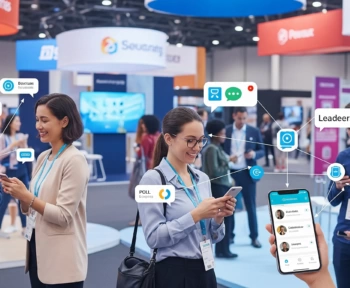In a world driven by data, companies are constantly searching for ways to transform vast amounts of information into actionable insights that can fuel growth. One of the most powerful tools to achieve this is Artificial Intelligence (AI). When paired with event data, AI can uncover patterns, predict trends, and ultimately, drive revenue. This blog will explore how businesses can leverage AI to extract meaningful insights from event data, turning it into a strategic advantage for growth and monetization.
Table of Contents
1. Understanding Event Data
Event data encompasses every interaction, transaction, or user behavior within digital systems, including mobile apps, websites, or physical devices. Examples range from clicks and page views to button taps and customer purchases.
Harnessing event data can seem overwhelming due to its volume and complexity. However, it holds immense potential when managed effectively. Businesses can use it to improve customer experiences, optimize services, and even generate new revenue streams. AI plays a crucial role in processing and analyzing these data points rapidly and accurately.
2. The Role of AI in Analyzing Event Data
AI offers tools such as machine learning algorithms, predictive analytics, and natural language processing (NLP) to analyze vast datasets. It identifies trends, segments data, and surfaces hidden insights that traditional data analysis might miss.

The magic of AI lies in its ability to learn and adapt. As it processes more event data, it refines its understanding of customer behaviors, making predictions increasingly accurate. This capability turns raw data into actionable insights that inform strategic decision-making.
3. Leveraging Predictive Analytics for Strategic Gains
Predictive analytics uses historical event data to forecast future outcomes. In mobile app development services, this means anticipating user behavior, such as churn, conversion likelihood, and optimal engagement strategies.
With AI-driven predictive models, companies can stay ahead of the curve. For example, businesses can identify customers likely to drop off and proactively offer incentives to retain them, leading to higher lifetime value.
4. Enhancing Customer Personalization
Personalization is at the heart of any successful business strategy. AI can transform event data into a personalized experience for each user by analyzing behavioral patterns and preferences.

Through mobile app development services, businesses can create individualized experiences for their users. For instance, AI can suggest relevant content, optimize push notifications, or tailor in-app recommendations, making users feel valued and understood.
5. AI-Driven Segmentation for Better Targeting
Segmentation involves dividing users into distinct groups based on common traits. Traditionally, segmentation was manual and static. However, AI enables dynamic segmentation, where groups are continuously refined based on new data.
Event data provides a rich foundation for AI to cluster users effectively. This ensures marketing campaigns and promotions are highly targeted, resulting in better engagement rates, conversions, and ultimately, revenue.
6. Automating Data Processing and Reducing Manual Efforts
Processing event data manually is time-consuming, error-prone, and expensive. AI can automate data collection, cleaning, and processing, reducing human intervention significantly.
By utilizing AI-driven automation, companies can save time and focus on strategy rather than data wrangling. This efficiency also empowers businesses to make faster, more informed decisions, improving the speed at which they adapt to changing market conditions.
7. Optimizing Event-Based Monetization Strategies
To maximize revenue from event data, businesses need to understand the true drivers of user engagement and monetization. AI helps identify these key drivers and offers insights on how to capitalize on them.

For mobile app development services, this could mean analyzing user interactions within apps to determine the best ad placements, price points for premium features, or in-app purchase bundles. AI-driven experimentation and testing further optimize these strategies for revenue growth.
8. Uncovering Hidden Patterns and Opportunities
One of AI’s superpowers is its ability to detect patterns that are invisible to human eyes. For example, AI can reveal microtrends, seasonal demand changes, or unique correlations that influence user behavior.
These insights enable businesses to pivot their strategies or introduce new services to capitalize on these opportunities. By discovering hidden patterns, AI transforms event data into a strategic asset.
9. Best Practices for Implementing AI with Event Data
Implementing AI-driven solutions starts with a clear strategy. Here are a few best practices:
- Data Quality Matters: AI models are only as good as the data fed into them. Ensure data is clean, consistent, and comprehensive.
- Leverage Robust Mobile App Development Services: If you operate through a mobile app, ensure it’s optimized to collect and process event data effectively.
- Invest in the Right Tools: Choose AI solutions that align with your business goals and can seamlessly integrate with existing systems.
- Iterate and Optimize: AI models need to be refined over time. Regularly review and update your models to keep pace with changing user behaviors and market dynamics.
10. Case Studies: Real-World Examples of AI in Action
E-commerce Success: A leading e-commerce platform integrated AI analytics into their event data strategy to understand purchasing behaviors. By analyzing browsing patterns, click-through rates, and cart abandonment data, the platform predicted user preferences and targeted promotions accordingly. The result? A 25% increase in sales within three months, driven by hyper-personalized marketing and improved customer engagement.
Mobile Gaming Transformation: A mobile game developer used AI to analyze player data and optimize in-game purchases. By tracking user interactions and behaviors, AI identified the moments when users were most likely to spend. Through strategic incentives like limited-time offers and personalized discounts, the game saw a 15% boost in average revenue per user (ARPU) and a significant drop in churn rates.
11. Overcoming Challenges in AI and Event Data Integration
While AI offers transformative potential, integrating it with event data comes with challenges. The most common obstacles include data silos, the complexity of AI implementation, and user privacy concerns.
To overcome these issues, businesses should prioritize data centralization and invest in scalable AI infrastructure. Additionally, transparency around data usage and robust security measures help maintain customer trust and compliance with data privacy regulations.
12. Future Trends in AI-Driven Event Data Insights
AI technology continues to evolve, offering new ways to leverage event data. Expect to see advances in AI-driven predictive models, real-time data processing, and even greater personalization capabilities.
With mobile app development services embracing AI-powered analytics, apps will become more intuitive and user-friendly. Predictive AI will guide users through their experiences, anticipate their needs, and offer unparalleled convenience, solidifying loyalty and boosting retention rates.
Conclusion
Leveraging AI to transform event data into revenue-driving insights is not just a trend but a business necessity. By understanding and strategically applying AI, companies can extract immense value from their data, drive customer engagement, and fuel long-term growth. From predictive analytics to personalized user experiences, the power of AI lies in turning complex datasets into actionable, profit-generating strategies. The key is to adopt the right practices, invest in robust mobile app development services, and continuously refine AI models to keep pace with changing market demands.




